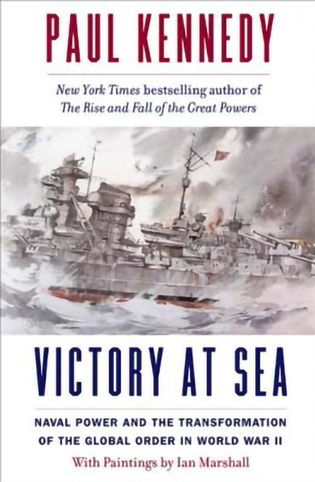
Ever Green: Saving Big Forests to Save the Planet
Thomas E. Lovejoy ’64, ’71PhD, and John W. Reid
Norton, $30
Reviewed by Bill McKibben
It’s bittersweet to hold this book, because it is the last we will have from Tom Lovejoy, who died last Christmas morning at the age of 80. After earning both a bachelor’s degree and a biology PhD from Yale, Lovejoy became one of the most important conservation biologists of his era, and played a major role in inventing the study of climate change biology.
His work centered on the tropical forest research station he built at Manaus in the Amazon, but he traveled the entire world, and this final book, cowritten with the economist and conservationist John Reid, outlines the crucial importance of the five great remaining megaforests on planet Earth. Besides the Amazon, they are the rainforests of the Congo and New Guinea, and the boreal forests of Canada and the Siberian taiga. If we are to somehow rein in global warming, we must not only stop the combustion of coal, gas, and oil in very short order, but also preserve as much of these intact woodlands as possible, for they have no equal in sequestering carbon from the atmosphere and storing it safely away.
And if we are to do that, we need to feel the love for these places, and their few, mostly indigenous, human inhabitants that animate this volume. The stories of these people are often tragic: their lands are coveted (often violently) for timber, mining, and ranching. But some of the strategies for protecting large areas that Lovejoy helped pioneer over the decades are working, both to save forests and to make those conserved areas economically useful for the tribes that should control them.
Lovejoy—an heir to the WASPish origins of conservation, but a delightfully open man whose grin was as distinctive as his bow tie—and Reid have given us a powerfully important volume, which argues that preserving the forests we have is far more important even than planting new ones. One wishes only that Lovejoy were still here to keep making the case in person.
Bill McKibben, an environmentalist and author, is the Schumann Distinguished Scholar at Middlebury College and leader of the climate campaign group 350.org.
___________________________________________________________________

Victory at Sea: Naval Power and the Transformation of
the Global Order in World War II
Paul Kennedy, J. Richardson Dilworth professor of history
Yale University Press, $37.50*
Reviewed by Admiral James Stavridis, USN (Ret.)
This is a brilliant and original work of history, literature, and art—a rare combination. Above all, it is a richly illustrated volume that has as its ambitious goal showing the reader how great-power naval competition from 1903 to 1946 transformed the global order during and after the Second World War. At its core is the story of the rise of the American navy: it was once one among several powerful maritime forces, but by war’s end, as the Japanese surrender was signed in Tokyo Bay, it had become the preeminent naval force in the history of the world.
Victory at Sea is beautifully written by Kennedy in clear and readable prose, and lavishly illustrated by 53 astounding paintings by the recently departed Ian Marshall, himself an incomparable force in sea painting. Notably, all of the paintings are shown in full color, and they form an integral part of the story Paul Kennedy sets out to tell. There are also 43 very useful maps, charts, and tables, and the volume itself is slightly oversize and printed on very high-quality paper. It is the kind of book that should form the cornerstone of any maritime library.
Kennedy is the author of several remarkable volumes of history and sea power, including the 1976 classic The Rise and Fall of British Naval Mastery. He is a renowned professor of history and strategy at Yale, his works are frequently quoted by global naval leaders, and he is widely regarded as a twenty-first-century version of Rear Admiral Alfred Thayer Mahan, who developed theories of sea power in the late nineteenth century that are still in vogue today. When I was Supreme Allied Commander of NATO, a collection of his books were in my office in Belgium.
He frames the Second World War through the lens of the six major navies who fought it: the US, Britain, and France on the Allied side; Japan, Germany, and Italy on the opposing side. Kennedy walks the reader briskly and chronologically through the key amphibious assaults, major sea battles, brutal convoy operations, and power projection attacks launched against major ports and bases from the sea. By the end of his gripping tale, the US Navy has become a kind of “last man standing” after the global naval war. The fleets of Japan, Italy, and Germany are essentially destroyed or captured; the French navy never really recovers from the fall of France; and the British Royal Navy is a shadow of its prewar power.
Moreover, Kennedy cleverly weaves into the narrative the power of transformative technology in the struggle, including the impact of radar, sonar, torpedoes, diesel submarines, fire control, intelligence interception, and of course the arrival of the nuclear bomb. He also describes in satisfying depth the impact of the overwhelming US industrial capability that became unstoppable once it was fully brought to bear—producing, for example, thousands of warships in the span of a few years. As a result of the attrition of other fleets, the rise of technology, and that massive production capability, by the end of Victory at Sea the US navy quite literally rules the waves.
A minor criticism: the reader may come away hungry to learn more about the senior naval leaders of these fleets. That human element is not deeply explored in the book. However, there are many superb biographies to fill in the commander’s side in more depth; in particular, the stories of the Japanese Marshal Admiral Isoroku Yamamoto and his counterpart in the Pacific, Fleet Admiral Chester Nimitz, are worth learning in real detail.
Finally, a specific note about Ian Marshall, who was, I freely disclose, a dear friend of mine. His works are a master class in the use of gorgeous watercolor, luminescence, and skillful composition. Every painting in Victory at Sea helps tell the story of the war in vivid terms. I am lucky enough to own one of the paintings in the book (number 13 on pages 93 and 94). It depicts two US battleships four years or so before the war, USS Nevada and USS Oklahoma. Their fates diverged forever on December 7, 1941. Oklahoma ignominiously sank in the attack, whereas Nevada—although wounded—got underway, was repaired, and was brought back to fight until the end of the war.
Every time I walk by that painting, I think how fate has its way not only with ships and with people, but with nations as well. We won a seminal victory at sea in the Second World War, but nothing about it was preordained. In the end, that is the hard message of Paul Kennedy’s brilliant book: that we must maintain our ability to conduct war at sea, especially in this increasingly turbulent and dangerous twenty-first century, when great power navies other than our own are again prowling the oceans. It is a message well delivered by Victory at Sea.
Admiral James Stavridis is the former Supreme Allied Commander at NATO and former dean of the Fletcher School of Law and Diplomacy at Tufts University.
___________________________________________________________________
* In our print edition and in an earlier version of this online article, we included the wrong price and publisher.
 loading
loading
